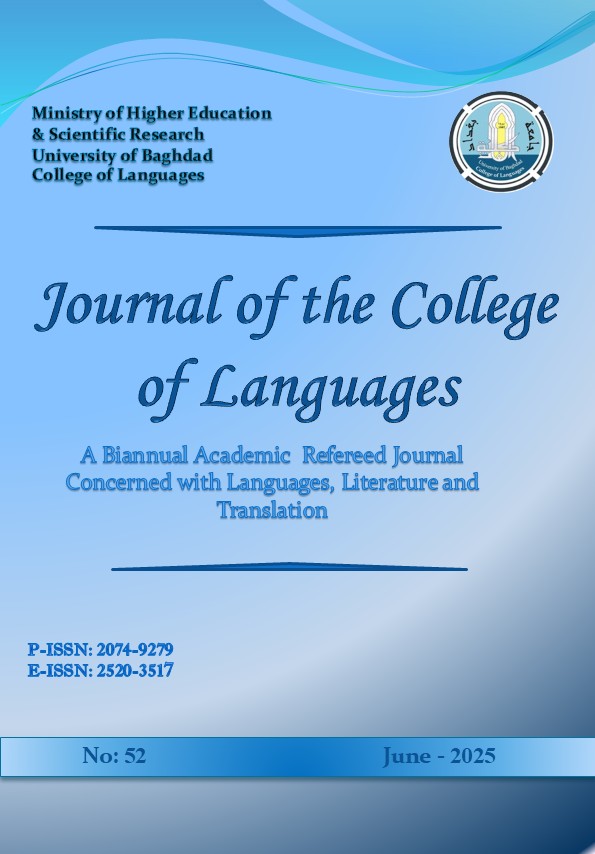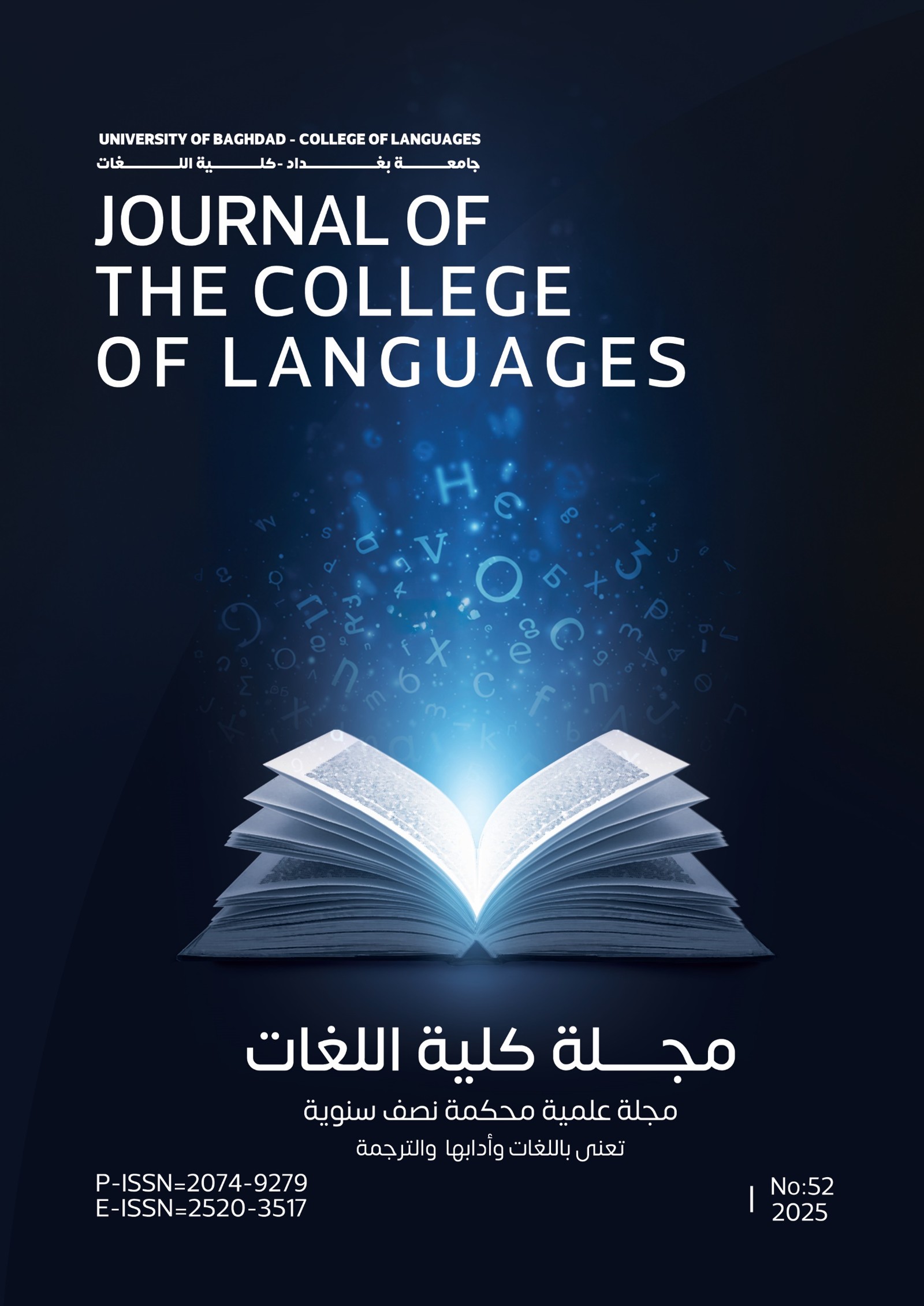Evaluation of the Translation of "Camel" and its Semantic Halos in Nahj al-Balagha Based on Newmark's Model (A Case Study of Dashti, Shahidi, and Foladvand Translations)
ارزیابی ترجمه «شتر» و هالههای معنایی آن در نهج البلاغه با تکیه بر الگوی نیومارک (مطالعه موردی ترجمههای دشتی، شهیدی و فولادوند)
DOI:
https://doi.org/10.36586/jcl.2.2025.0.52.0251Keywords:
Nahj al-Balagha, Dashti, Shahidi, Foladvand, Newmark, نهج¬البلاغه, دشتی, شهیدی, فولادوند, نیومارکAbstract
Abstract
Nahj al-Balagha is considered a mirror of Arab culture in addition to being a religious book with human themes, in which Imam Ali (AS) used the cultural elements of that time, including the camel and its semantic auras, to express his experiences and convey his thoughts. The translation of these elements, due to their inclusion of concepts and semantic halos related to Arab culture, the lack of clear Persian equivalents, and their importance in reflecting the cultural atmosphere governing Nahj al-Balagha, has made the task of translation difficult and further emphasizes the necessity of paying close attention to accurate translation and its full reflection in the target language. Peter Newmark (2011) is one of the theorists who focused on cultural elements in translation and proposed solutions for their transfer.
In this article, we attempt to analyze how Dashti, Shahidi, and Foladvand translated these elements by applying Newmark’s model, using a descriptive-analytical method. The importance of the camel and its semantic halos is considered one of the most widely used cultural elements in Nahj al-Balagha, and thus, we place it under critical examination. The findings of the research indicate that the translators employed various methods, with literal translation, cultural equivalence, and content analysis being the most frequently used. However, it would have been better if they had, in some cases, used an integrated and explanatory approach to achieve greater accuracy in translation.
چکیده
نهج البلاغه در حدّ خود آیینه فرهنگ عرب است که حضرت علی (ع) در آن برای بیان تجربیات و انتقال اندیشههایش، از عناصر مهم فرهنگی روزگار خود، از جمله شتر و هاله های معنایی آن بهره جسته است. ترجمه این عناصر، بهدلیل مفاهیم مرتبط با فرهنگ عرب، نبود برابرنهاد مشخص فارسی و اهمیت آن در شناساندن فضای فرهنگی حاکم بر نهج البلاغه، کار مترجم را دشوار و لزوم توجّه به ترجمه دقیق و بازتابش در زبان مقصد را دوچندان میکند. ازجمله نظریهپردازانی که به عناصر فرهنگی در ترجمه اهتمام داشته و راهکارهایی برای انتقال آن پیشنهاد کردهاند، پیتر نیومارک(2011م) است.
در این نوشتار برآنیم با روش توصیفی-تحلیلی و با توجه به اهمیت شتر و هالههای معنایی آن به عنوان یکی از عناصر فرهنگی بهکاررفته در نهجالبلاغه، نحوه ترجمه آن توسط دشتی، شهیدی و فولادوند را با بهکارگیری الگوی نیومارک به ارزیابی بگذاریم. یافتههای پژوهش نشان میدهد مترجمان از روشهای متعددی بهره بردهاند که ترجمه تحت اللفظی، معادل فرهنگی و تحلیل محتوا پُرکاربردترین آنها بوده است، و نیکوتر بود ایشان در مواردی از روش تلفیقی و افزوده توضیحی بهره میجستند تا ترجمه مطلوب تری به دست دهند.
References
References
Afzali, Ali, Mazhar Atabi, Rahim, Madani, Akram, Arziabi, What is the purpose of the translation of Naguib Mahfouz’s Dastanhai Kotah, “The Persian Zaban” on the Basis of the German Ladmiral Theory, Journal College of Languages, Issue No. 50/2024, DOI: 10.36586/jcl.2.2024.0.50.0191
Al-Azhari (n.d). Tahdhib al-Lughah. researched by al-Bardouni.Al-Masriya House for the Study and Translation.
Al-Jawhari (1429). Mu’jam al-Sahah.Beirut: Dar al-Maraf.
Al-Saleh, Sobhi (n.d). Studies in jurisprudence.9th edition. Dar Al-Alam Lal-Mulayin.
Al-Thalabi (1422). Al-Kashf wa al-Bayan. researched by Abu Muhammad bin Ashur, Beirut: Dar Ihya al-Turat al-Arabi.
Al-Zamakhshari (n.d). Al-Kashshaf. Beirut: House of Revival of Arab Heritage.
Bahrani, Maytham bin Ali bin Maytham (1428).Sharh Nahjul-Balaghah.1st edition.Maktaba Fakhrawy: Bahrain.
Dashti, Mohammad (1392). translation of Nahj al-Balagha.6th edition. Qom: Zohur.
Elyouzbeki, Moayed (1984). "Al-Batula fi al-Sha'ar al-Jahili", Master's thesis. Faculty of Literature. University of Mosul.
Foladvand, Mohammad Mahdi (1387). translated by Nahj-ul-Balagha.Tehran: Ashkazar.
Hashemi Minaabad, Hassan (2019). Theoretical and Experimental Discourses in Translation. Tehran: Ketab Bahar.
Ibn Abi Hatim (1417). Tafsir al-Qur'an al-Azeem. researched by Asad Muhammad al-Tayyib. Makkah: School of Nizar Mustafa al-Baz.
Ibn Abi al-Hadid (2007). Commentary on Nahj al-Balaghah. Baghdad: Dar al-Kitab al-Arabi.
Ibn al-Athir (1426). al-Nahiya fi Gharib al-Hadith wa al-Athar, al-Zawi and al-Tanahi research. Qom: Dar al-Tafsir.
Ibn Faris (n.d).Mujajm al-Maqayis fi al-Laghha. Beirut: Dar al-Fikr Lal-Tafta and Al-Nashr and Al-Tawzi’ah.
Ibn Manzur (1997). Lisan al-Arab. Beirut: Dar Sader.
Khalil bin Ahmad al-Farahidi (1414). Ardaan Kitab al-Ayn, researched by Mahdi al-Makhzoumi and Ibrahim al-Samra’i.Qom:Aswah Publications.
Makarem Shirazi, Nasser (1996).Imam's Message: A New and Comprehensive Explanation of Nahjul-Balaghah. Tehran: Daral-e-Koteb al-Islamiyyah.
Manafi Anari, Salar (2003). Limits of Translatability of Poetry. Quarterly Journal of Translation Studies. Tehran, Year 1, Issue 1, 9-29.
Newmark, Biter (2006). Al-Jama'i fi al-Tallah. translated by Hassan Ghazaleh, Beirut: Dar al-Hilal School.
Niazi, Shahriar, Zeinab, Ghasemi Asl (2018). Models for Evaluating Translation. Tehran: Tehran University Press.
Shahidi, Seyyed Jafar (2017).Translation of Nahj al-Balagheh. 34th edition, Tehran: Scientific and Cultural Publications
Zaif, Shoghi(1998). History of Arabic literature Al-Asr al-Jahili era.Cairo: al-Maarif.

Downloads
Published
Issue
Section
License
Copyright (c) 2025 Journal of the College of Languages (JCL)

This work is licensed under a Creative Commons Attribution 4.0 International License.







